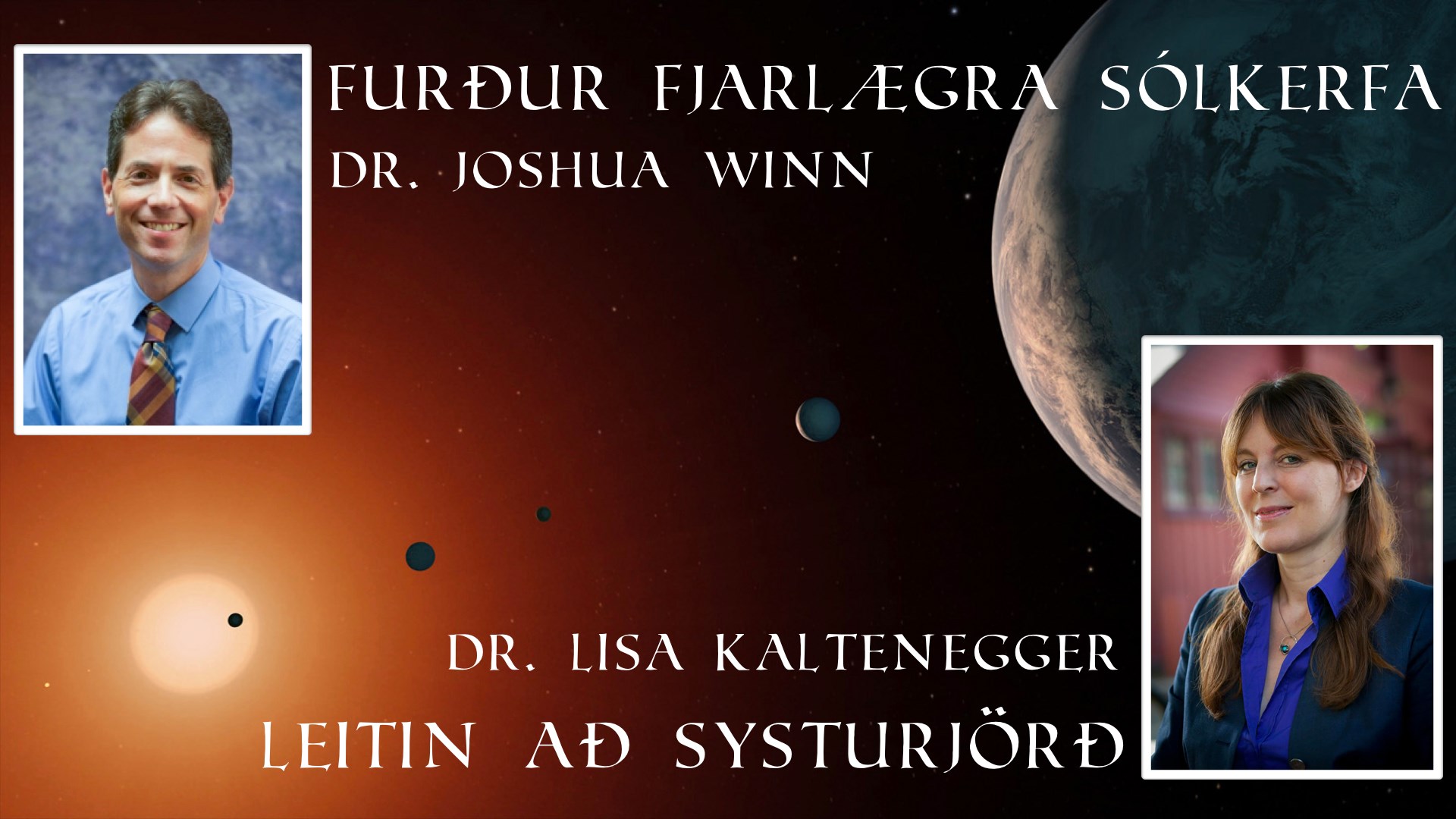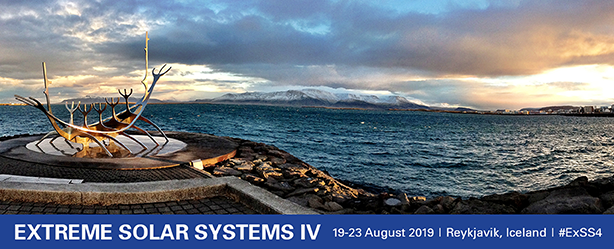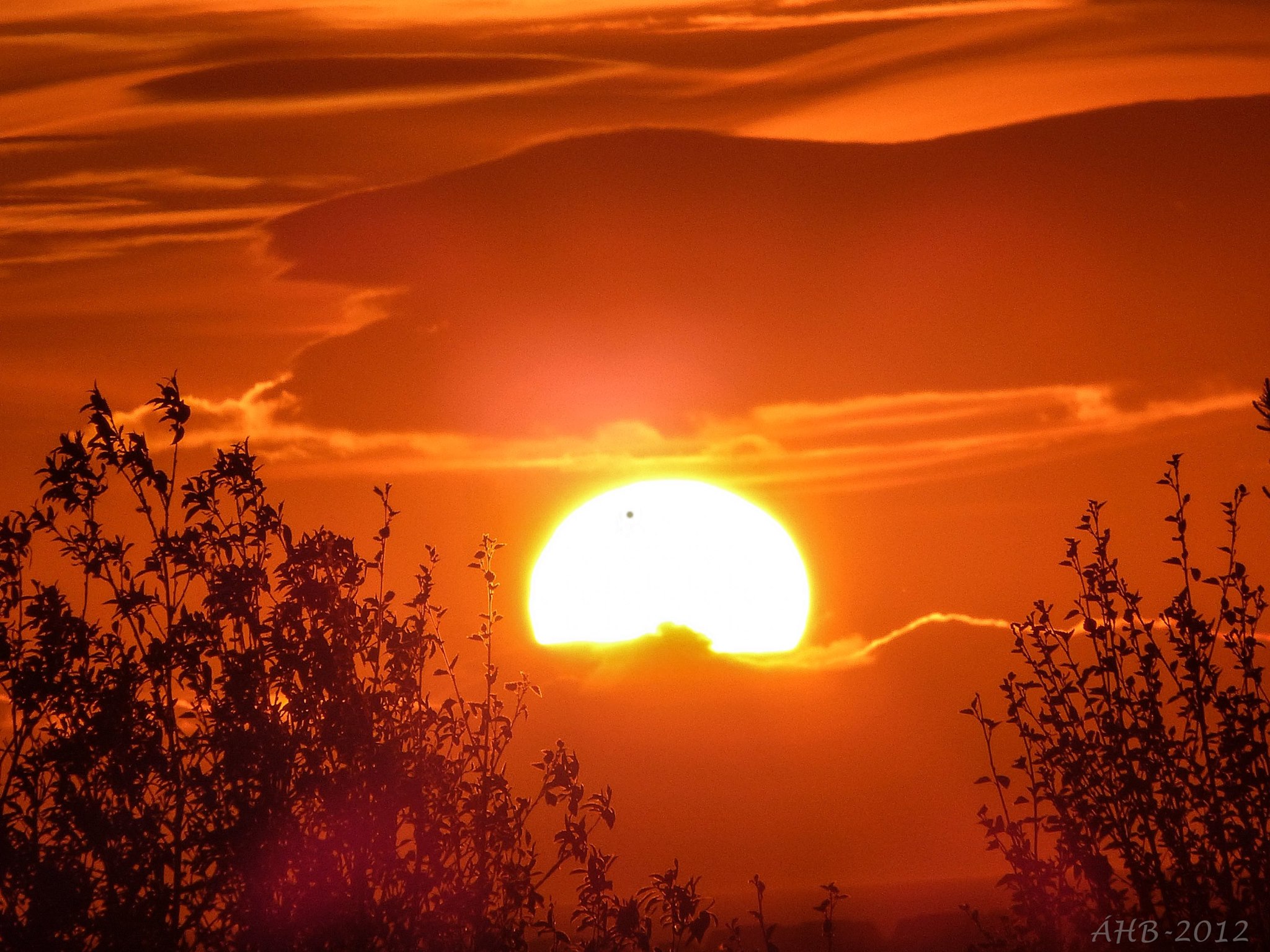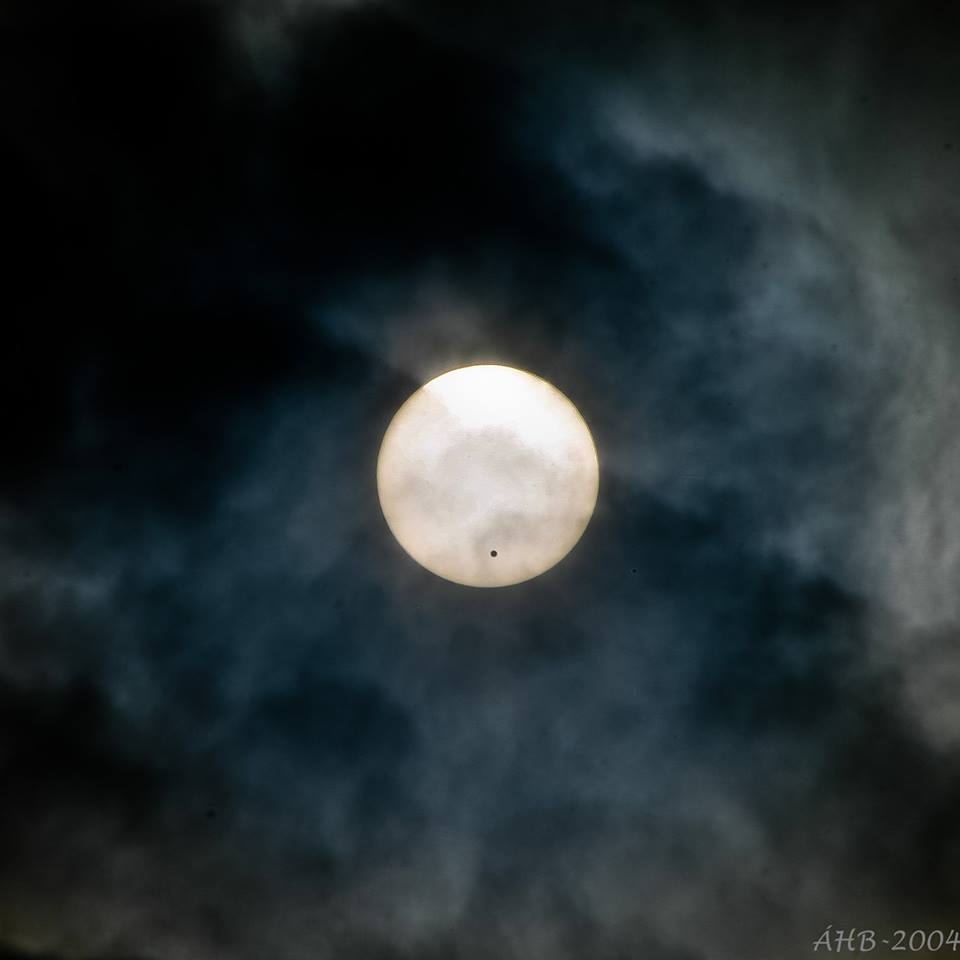(Í vinnslu)
Um 600 stjörnufræðingar frá öllum heimsálfum komu saman á ráðstefnunni EXTREME SOLAR SYSTEMS IV í Hörpu 19. – 23 ágúst til að ræða nýjustu niðurstöður leitarinnar að reikistjörnum í öðrum sólkerfum. Um 4000 hnettir á brautum um aðrar sólstjörnur hafa nú fundist með Kepler geimsjónaukanum og öðrum rannsóknatækjum. Sérstök áhersla verður á leitina að hnöttum þar sem líf gæti hafa kviknað, þrifist og þróast.
Stjarnvísindafélag Íslands í samvinnu við Bandaríska sendiráðið og American Astronomical Society bauð upp á tvö erindi ætluð almenningi og námsfólki, 22. ágúst. Fyrirlestrarnir nefndust Furður fjarlægra sólkerfa. Fyrirlesararnir, þau Lisa Kaltenegger (Cornell) og Joshua Winn (Princeton), eru bæði í fremstu röð fræðimanna á þessu sviði. Kynnir var Sævar Helgi Bragason.
Að mati þess sem þessar línur ritar, voru báðir fyrirlestrarnir einstaklega áhugaverðir og vel fluttir. Með því allra besta.
Fyrirlesturinn var ekki tekinn upp (held ég), en hér fyrir neðan eru nokkuð hliðstæðir fyrirlestrar fyrir þá sem misstu af viðburðinum eða vilja rifja upp. Þeir eru aðeins frábrugðnir, en fjalla um sama efni. Hafa verður í huga að þeir eru frá 2014 og 2017, en hlutirnir gerast hratt á þessu sviði.

Lisa Kaltenegger – “Breaking the Wall to Thousands of New Worlds” ( @Falling Walls 2014)
Joshua Winn, Princeton Univ, “The Search for Exoplanets” (2017).
Af vefsíðu American Astronomical Society:
Meeting on Extreme Solar Systems in a Land of Extremes

It’s been a quarter-century since the first planets were discovered orbiting other stars. In that brief time span, we’ve confirmed the existence of more than 4,000 exoplanets in about 3,000 different star systems and determined that there are probably more planets than stars in the universe. With NASA’s Transiting Exoplanet Survey Satellite (TESS) now in orbit and ESA’s CHaracterising ExOPlanet Satellite (CHEOPS) due for launch later this year, we are truly in a golden age of exoplanet science.
At this auspicious juncture, hundreds of astronomers, planetary scientists, and researchers from other relevant disciplines will gather for Extreme Solar Systems IV (ExSS IV). This conference, the fourth in a series that began in 2007, will take place at the Harpa Center in Reykjavik, Iceland, 19-23 August 2019. ExSS IV will cover all aspects of observational and theoretical studies of exoplanets, including exoplanet detection and characterization using current and planned ground- and space-based techniques; the formation of planets in extreme environments such as around binary stars and in dense star clusters; the fate of planets around evolved stars such as giants, white dwarfs, and pulsars; and the many factors affecting planetary habitability.
ExSS IV is hosted by the Center for Interdisciplinary Exploration and Research in Astrophysics (CIERA) at Northwestern University and co-sponsored by the American Astronomical Society as part of the AAS Topical Conference Series. The meeting happens to coincide approximately with the 70th birthday of Doug Lin (University of California, Santa Cruz), who co-chairs the scientific organizing committee (SOC) with Fred Rasio (CIERA/Northwestern).
The early-bird registration deadline for ExSS IV is Tuesday, 16 April. After that date, the registration fee increases by 11%, so register today!
We’ve blocked rooms in six hotels within walking distance of the Harpa Center at a range of prices. Once you register, you’ll be given the opportunity to reserve a room at the hotel of your choice — but note that one is already fully booked, so register and book your accommodation as soon as possible!
Abstract submission opens on 25 April, and the regular deadline is 30 May. We want to be sure to accommodate the latest discoveries in Reykjavik, so we will accept late abstracts through mid-July — but only for posters (with at most one or two exceptions for genuine breakthroughs). Accordingly, the scientific program for the meeting will not be finalized until late July. All presentations will be drawn from the abstracts we receive, which will be evaluated and ranked by the SOC — a virtual Who’s Who of leaders in the exoplanet community. This means that the conference program will be shaped mainly by the participants, not by the organizers.
Key Dates & Deadlines
16 April: Last day for early registration
25 April: Abstract submission opens
30 May: Regular abstract deadline
3 June: Late abstract submission opens
16 June: Accommodation reservation deadline
27 June: Last day for regular registration
11 July: Late abstract deadline
In addition to the exciting exoplanet science, of course, a major highlight of ExSS IV will be Iceland itself, a country of extreme geological contrasts. Often called “The Land of Fire and Ice,” Iceland is home to some of the world’s most active volcanoes as well as some of its largest glaciers. It is also the land of light and darkness. Long summer days with nearly 24 hours of sunshine are offset by short winter days with only a few hours of daylight. In cooperation with the AAS and the local organizing committee (LOC), chaired by Steinn Sigurdsson (Penn State University), Iceland Travel has prepared special tours for ExSS IV attendees to showcase the country’s natural phenomena and the life of its people, past and present.
Tours will be held at the midpoint of the conference, on the afternoon of 21 August, and you’ll have your choice of three different itineraries, each including afternoon snacks and dinner. Sights included on the various tours include the parliament plains at Thingvellir, a UNESCO World Heritage site where Vikings convened as far back as 930 AD; Iceland’s best-known waterfall, Gullfoss, where glacial meltwater plunges 32 meters; and Geysir, where you can see the hot spring that gives name to the world´s geysers.
Other possible tour stops include Kaldidalur (Cold Valley), where numerous Mars-analog features can be observed in the landscape; the geothermal power plant at Hellisheiði; several volcanoes that have either recently erupted or show definite signs of upcoming activity; the valley glacier Sólheimajökull, where you can learn about the rapid retreat of glaciers due to climate change; or the historical site Reykholt, where the chieftain Snorri Sturluson lived in the early 13th century and wrote several of the most important works of the Icelandic Saga literature.
We hope to see you in Iceland!
Tvisvar hef ég séð reikistjörnu ganga fyrir framan sólina okkar. Í báðum tilvikum var það Venus. Ég smellti af myndum:

Miðnætursól og Venus:
Þverganga Venusar 6. júní 2012 klukkan 00:37. Þvergangan byrjaði 5. júní klukkan 22:09.
Panasonic Lumix FZ150. 1/2000 f/8, ISO 160, 600 mm linsa. Mylar plastþynna til að deyfa ljósið. Myndin tekin í Garðabænum.
Þvergöngur Venusar eru sjaldgæfar. Þær hafa verið árin 1396, 1518, 1526, 1631, 1639, 1761, 1769, 1874, 1882, 2004 og 2012. (Og auðvitað oft fyrir 1396…).
Það er pínulitið merkilegt að hafa upplifað tvær þvergöngur og náð myndum af þeim 🙂
Næst verða þvergöngur 11. desember 2117, og 8. desember 2125
.

Hinn 8. júní 2004 klukkan 07:45 að morgni silgdi reikistjarnan Venus fram hjá sólinni séð frá Jörðinni. Þverganga Venusar eða Venus Transit kallast það. Eins konar örlítill sólmyrkvi.
1/4000 sek. f/36 og 100 ISO. Brennivíddin var 300mm. Canon EOS 300D
Ég fann ekki mylar plastþynnuna sem ég ætlaði að nota til að deyfa ljósið, en almættið kom til hjálpar. Lítið ský kom siglandi og renndi sér fyrir framan sólina, mátulega gegnsætt il að myndin yrði rétt lýst.
